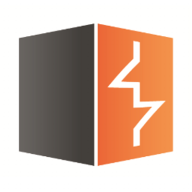

PortSwigger Burp Suite Professional and SonarQube Cloud compete in the field of application security and code quality. Burp Suite Professional seems to have the upper hand in manual testing capabilities, while SonarQube excels in automated code quality analysis.
Features: PortSwigger Burp Suite Professional offers features such as Proxy, Repeater, and Intruder, which are crucial for web application penetration testing, as well as enhanced functionality through community-driven extensions. SonarQube Cloud, on the other hand, provides continuous analysis of code quality, helping developers identify vulnerabilities and code duplications during development.
Room for Improvement: PortSwigger Burp Suite Professional could reduce false positives, improve CI/CD integration, and enhance reporting features. SonarQube Cloud might benefit from lowering its false-positive rate, refining UI configuration, and expanding integration capabilities with different development environments.
Ease of Deployment and Customer Service: PortSwigger Burp Suite Professional offers flexible deployment options, though some users note challenges with immediate tech support. SonarQube Cloud primarily deploys on public cloud with easy integration into workflows but may require better documentation and customer support.
Pricing and ROI: PortSwigger Burp Suite Professional is praised for being cost-effective for both individuals and enterprises. SonarQube Cloud has pricing based on lines of code, which is considered reasonable but can be costly as code volume increases. Both tools show significant ROI; Burp Suite in security testing, and SonarQube in improving code quality within development processes.


Burp Suite Professional, by PortSwigger, is the world’s leading toolkit for web security testing. Over 52,000 users worldwide, across all industries and organization sizes, trust Burp Suite Professional to find more vulnerabilities, faster. With expertly-engineered manual and automated tooling, you're able to test smarter - not harder.
PortSwigger is the web security company that is enabling the world to secure the web. Over 50,000 security engineers rely on our software and expertise to secure their world.
SonarQube Cloud offers static code analysis and application security testing, seamlessly integrating into CI/CD pipelines. It's a vital tool for identifying vulnerabilities and ensuring code quality before deployment.
SonarQube Cloud is widely used for its ability to integrate with tools like GitHub, Jenkins, and Bitbucket, providing critical feedback at the pull request level. It's designed to help organizations maintain clean code by acting as a quality gate. This service supports development methodologies including sprints and Kanban for ongoing vulnerability management. While appreciated for its dashboard and integration capabilities, some users find initial setup challenging and note the need for enhanced documentation. The recent addition of mono reports and microservices support offers deeper insights into security and code quality, though container testing limitations and false positives are noted drawbacks. Manual intervention is sometimes required to address detailed reporting, with external tools being necessary for comprehensive analysis. Notifications for larger teams during serious issues and streamlined integration of new features are also areas of improvement.
What are the key features of SonarQube Cloud?In specific industries, SonarQube Cloud finds application in finance and healthcare where code integrity and security are paramount. It allows teams to identify critical vulnerabilities early and ensures that software development aligns with industry regulations and standards. By continuously analyzing code, it aids organizations in deploying secure and reliable applications, fostering trust and compliance.
We monitor all Static Application Security Testing (SAST) reviews to prevent fraudulent reviews and keep review quality high. We do not post reviews by company employees or direct competitors. We validate each review for authenticity via cross-reference with LinkedIn, and personal follow-up with the reviewer when necessary.